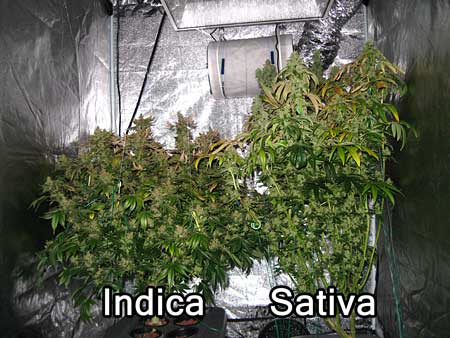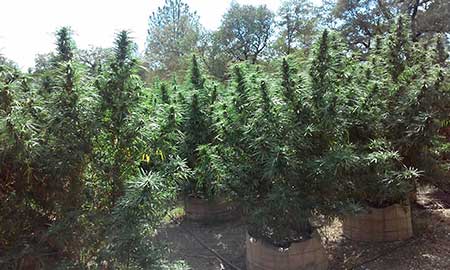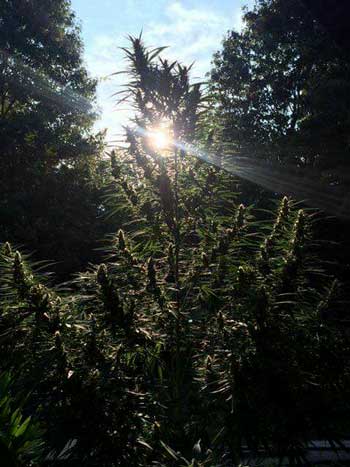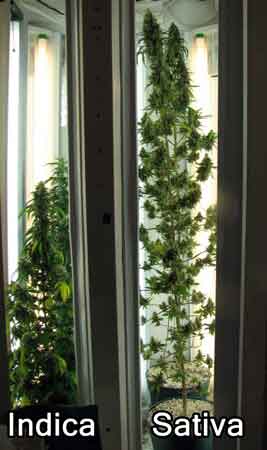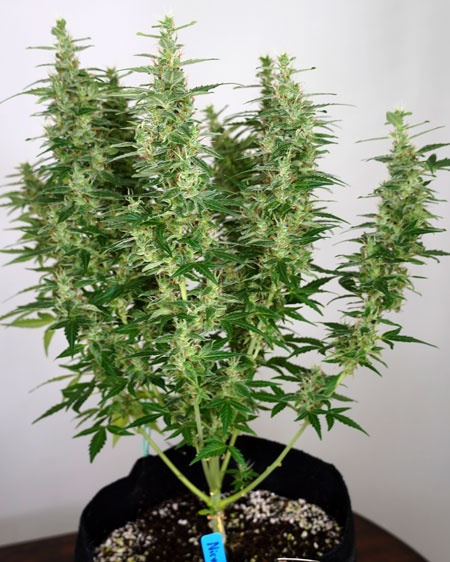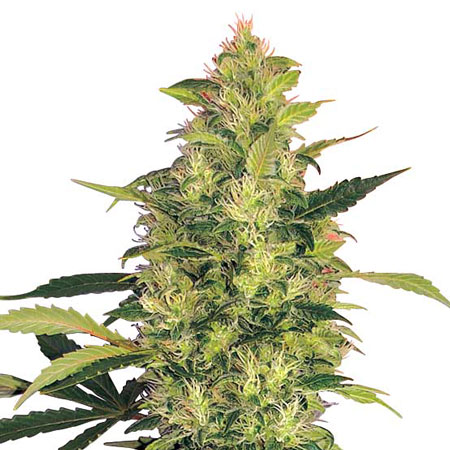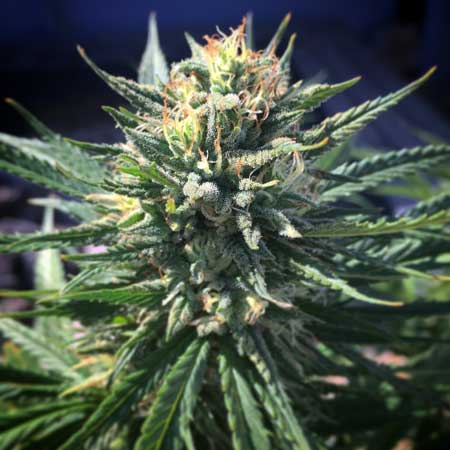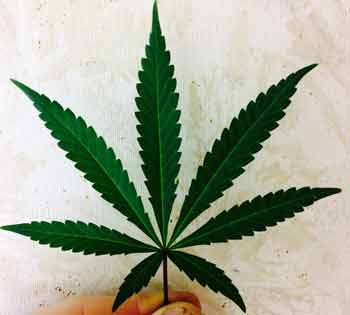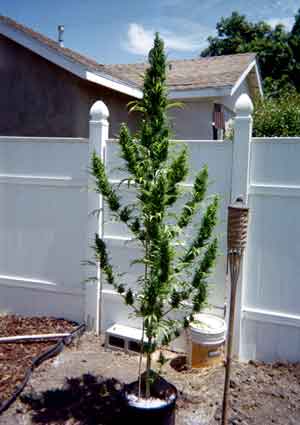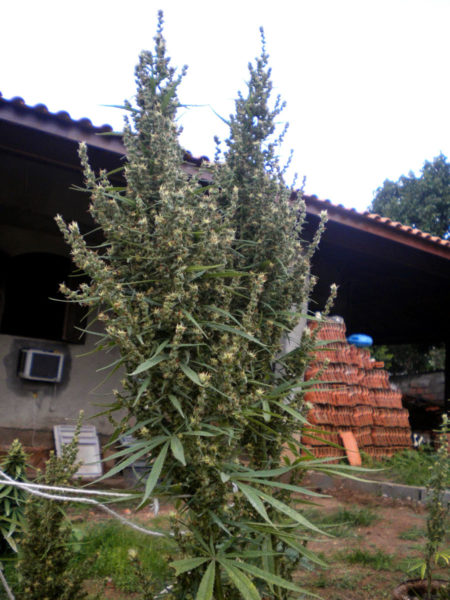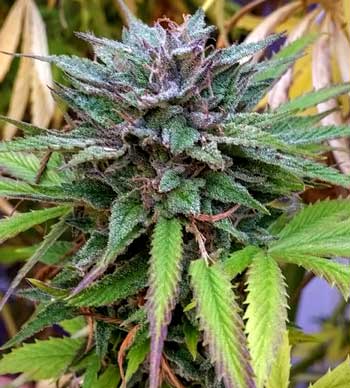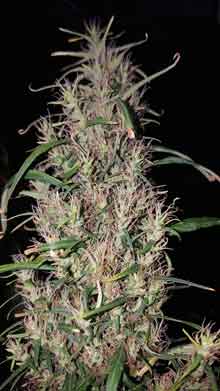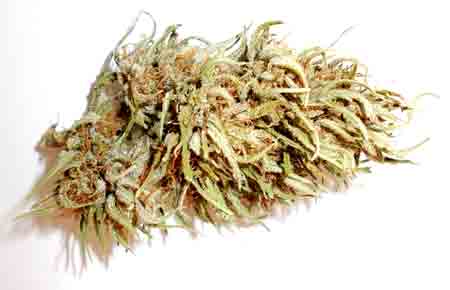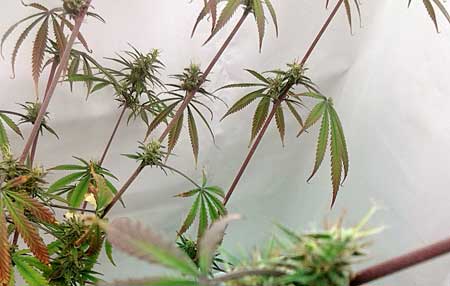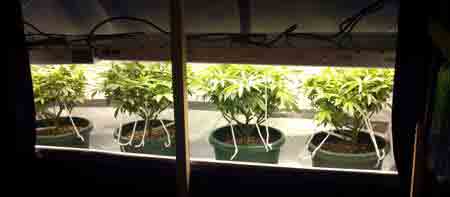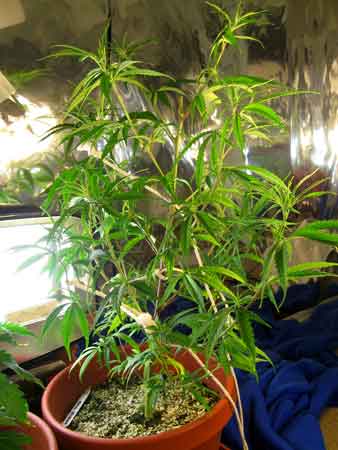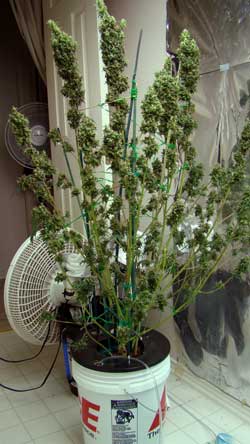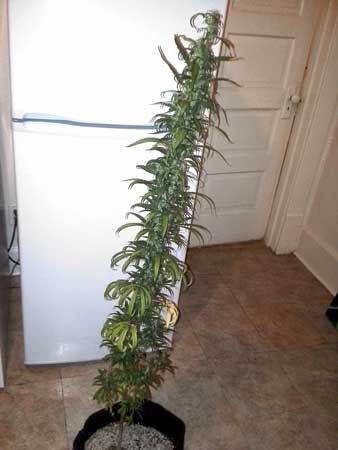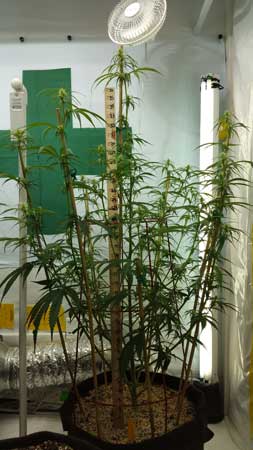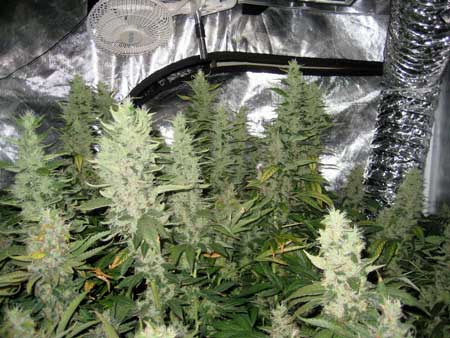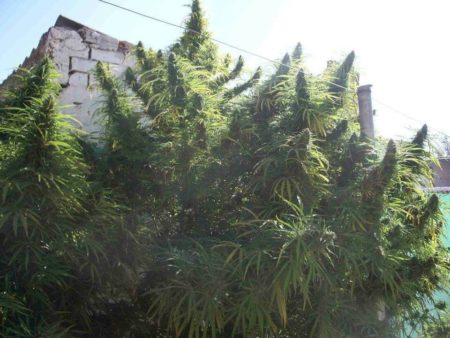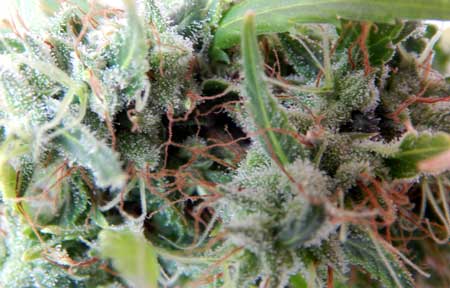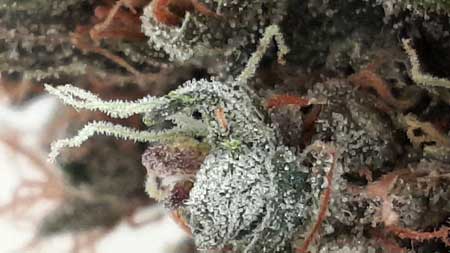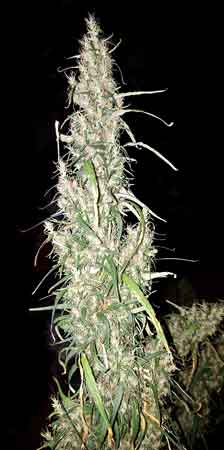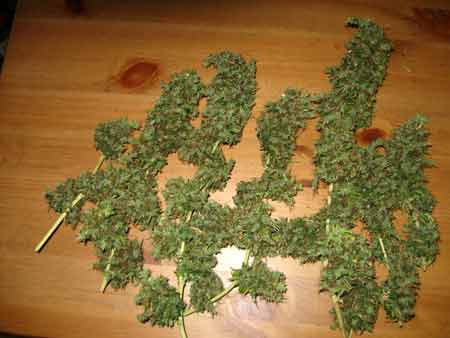by Nebula Haze (with a big “Thank You” to alltatup who inspired this tutorial!)
Growing & Caring for Finicky Strains Indoors
When it comes to growing cannabis indoors, there are two main varieties of photoperiod strains that are cultivated for their buds: Indica and Sativa. While Indica plants tend to stay small and manageable (which can be convenient for indoor growing), Sativa plants are typically a little tougher to care for indoors.
Sativa plants create challenges for indoor growers because of their tall, lanky growth pattern
Note: “Sativa” and “Indica” are extremely loose definitions and practically all marijuana strains are hybrids. “Pure” Sativa strains are rare if they exist at all. The following tutorial is all about strains with Sativa ancestry that carry a lot of common Sativa characteristics.
Sativa strains originated from hotter regions near the equator and are well adapted to long growing seasons and hot weather. As a result, they carry a few properties from their family history that can catch an indoor grower by surprise.
These two Sativa plants (Panama strain) got far taller than the grower expected. The height of Sativa plants can quickly get out of control in a small grow space.
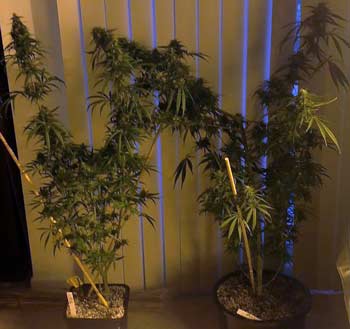
Why do we still try to grow Sativa plants indoors if it’s tough? In part, because certain Sativa strains often have amazing and unique buds effects. Plus, many Sativa hybrids produce great yields.
Typical Indica vs Typical Sativa plant
These two plants were grown indoors together under the same conditions from seed to harvest. The short Indica plant produced half the yields of the 5-foot Sativa! A big part of this is the fact that the Sativa plant got big enough to take full advantage of all the lights, while the Indica stayed short.
Sativa strains often have “foxtails” (buds grow in little towers). This is what the buds of a “true” landrace Sativa looks like – basically all foxtails! Most available “Sativa” strains today are actually hybrids with some Indica genes mixed in to help increase bud density and improve overall structure.
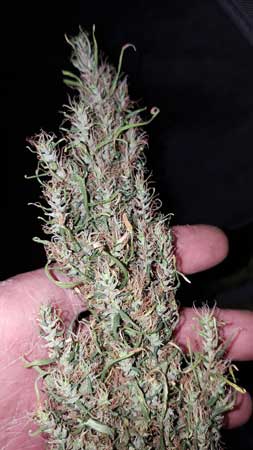
However, after a Sativa strain has been hybridized to produce tighter buds, they often reward growers with huge yields. These Sour Diesel buds by Nirvana can grow enormous in good conditions.
Even with Sativa hybrids like this Kaya Gold, it’s not uncommon for buds to retain a “wild” or leafy appearance
General Appearance of Sativa Plants
- Often have long, skinny leaves
- Generally stretchy appearance with lots of side branching and plenty of space between sets of leaves (as opposed to the short, squat Christmas tree shape of an Indica plant).
- Tend to grow tall and fast throughout their life, and may double or even triple in height after entering the flowering stage!
- Buds often have “foxtails” and may be loose or airy compared to Indica buds, which tend to be solid and dense. However, a well-bred Sativa strain can still often out-produce an Indica in the same conditions because everything about the plant grows so big and so fast.
Long, thin “fingers” on Sativa leaves, compared to Indica leaves which tend to be round and fat.
Sativa plants tend to grow tall with extensive side branching
Bud Effects
Sativa buds tend to give a more cerebral “in-your-head” effect than the more “body-based” Indica effects. Sativa buds may feel more energizing, so some people prefer Sativa strains for daytime use or in social settings.
A Sativa-based strain with a little bit of Indica genes
The buds from another “pure” Sativa strain – Although the buds are airy and a little strange looking, some of these old Sativa strains produce unique mental effects that you just don’t find anywhere else.
Dried leafy buds of a “pure” Sativa. Only a few decades ago in the USA, this type of cannabis was common! Now you’ll almost never see buds like this unless you grow them yourself.
Environment & Nutrients
- Okay with heat, hates the cold – Sativa plants generally respond well to high levels of light and don’t mind a little heat, but can easily get stressed by cold temperatures
- Sensitive to high nutrients – Can be nutrient-sensitive, especially in dry heat, low light levels, or if a plant does not have many leaves. It’s not uncommon to see nutrient burn or Nitrogen toxicity at standard-strength nutrient levels. It’s a good idea to give lower levels of Nitrogen if you see an N toxicity, this will help encourage as much bud growth as possible. You don’t want to give zero Nitrogen, but be on the lookout for dark green leaves and curled tips!
Although Sativa plants tend to be resistant to heat, they are easily stressed by even cool temperatures. This plant was stressed by cold nights and grew tiny buds.
Growing Tips – Vegetative Stage
- Train plants to grow flat and wide – A flat table-top canopy results in bigger yields and Sativa plants respond well to LST (low stress training). They are difficult to stress once they’re growing fast, so feel free to train to your heart’s content.
- Avoid defoliation unless plant is extra leafy – If you’re naturally seeing a significant amount of stem between sets of leaves (as is common with many Sativa strains), defoliation can sometimes do more harm than good. With a stretchy plant, the buds and inside of the plant are often already as exposed as they need to be for optimum results. Defoliation is most effective at increasing yields of bushy plants where buds get hidden by leaves, which is much less common with Sativa strains than Indica strains.
- Use powerful grow lights – Sativa plants originated near the equator and can handle higher levels of light than many Indica plants.
You might want to avoid Sativa-based strains if you’re using a small grow space like this
Example of a Sativa plant that’s 2 feet tall at only 5 weeks old, and already had to be topped to keep it short! This is a very typical vegetative growth structure for a Sativa plant.
Growing Tips – Flowering Stage
- Initiate flowering stage early – If you know you’re growing a tall stretchy plant, initiate the flowering stage with a 12/12 light schedule when plants are a third of the final desired size. That’s because some Sativa strains can triple in height or more after they start getting 12/12.
- Prepare for a long flowering stage – Some Sativa strains may need 3 months in the flowering stage to be ready to harvest on the standard 12/12 flowering light schedule. It’s possible to “hurry them along” with longer nights (like 11/13, 10/14, or even 8/16 light schedule) but this can greatly reduce yields.
- Watch out for bananas and hermies – Can be more common to get hermies, especially under stress or close to harvest if buds are not pollinated. If buds appear mostly done and suddenly throw out a bunch of bananas (a type of hermie), it could mean it’s time to harvest
This Sativa plant was only 1/3 this size when the grower initiated 12/12. It tripled in height before harvest. Be prepared if you know you’re growing a tall strain.
If you initiate the flowering stage when the plant is still very small, you may end up with just one long bud like this
Sativa plants often grow with lots of stem between sets of leaves
Example of the power of Sativa cannabis plants when they’re trained to grow flat and wide during the vegetative stage – look at all those huge Sativa colas that are all the same distance from the grow light! These plants still have several weeks of fattening left to go before harvest!
Sativa buds may be airier than Indica-leaning buds on average, but they make up for it with soaring, memorable bud effects. This Sativa-dominant Golden Tiger grows mind-altering (i.e. strong) buds that feel “up” but not debilitating.
Harvest Tips
- Trichomes may not turn amber – Some Sativa strains have trichomes that may never turn amber even after months of flowering. If your plant has fully white trichomes, it’s possible it may be time to harvest even if no ambers are appearing.
- Harvest when trichomes are mostly cloudy white – Harvest when trichomes are mostly cloudy with a few clears left for the most psychedelic effect. Look below for two examples of trichomes from Sativa plants that are ready to harvest.
Trichomes should be mostly milky white with just a few clears for maximum potency! These buds are ready to be harvested, but it’s still on the early side because there are quite a few clear trichomes left.
These buds are smack in the middle of the harvest window. It has nearly all white trichomes and just a clear trichome here and there. You’ll notice even at this stage with nearly all white trichomes you don’t really see many if any amber trichomes (which you would generally see in an Indica plant by the time it hits this stage).
This is the main bud on a Sativa plant just before harvest. Sativa bud structure is often long and thin, almost like spears.
The resulting buds end up looking a little bit differently after they get trimmed from your standard Indica bud, which tends to grow more in “chunks”
Hopefully, you are now more prepared to grow your own Sativa marijuana plants indoors. The challenge of the strain will reward you.
Jump to…
How do I produce top-shelf buds every time?
What Are the Best Strains for Beginners?

